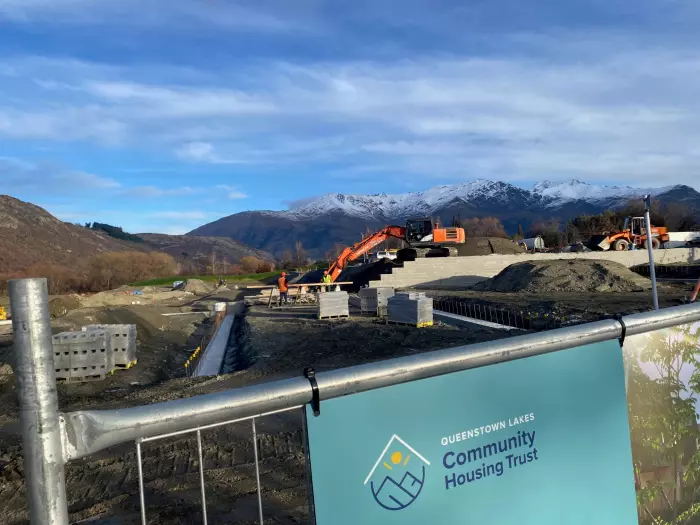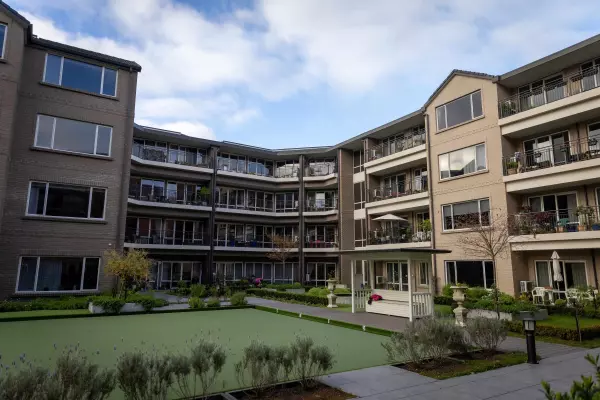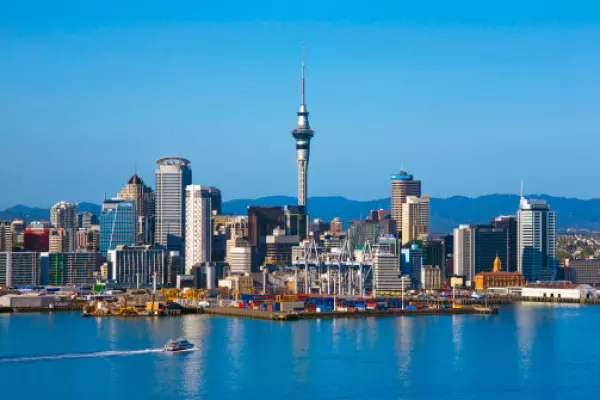Institutional investors and build-to-rent developments could be the wild card in Queenstown’s aspirations to hit its affordable housing targets.
Simplicity Living, the building offshoot of non-profit KiwiSaver provider Simplicity, has confirmed its intention to expand into the region with “at least” 100 units in a build-to-rent development.
The builder is already well advanced across a pipeline of 1,200 builds in Auckland, part of a medium-term target of 10,000 builds.
Simplicity managing director Sam Stubbs said the “real need” in Queenstown was much higher than that, but there were some challenges, among them the cost of land and building.
The company’s turnkey apartments, including furnishings, were running at about $550,000 each in Auckland, or about $2,500 per square metre.
Stubbs said there was clearly a large Queenstown premium, given the size of the market, but he was confident the group’s building system would place it as one of the lowest-cost players.
Make it attractive
Julie Scott, chief executive of the Queenstown Lakes Community Housing Trust, said the council and trust could be key in getting introductions to landowners, streamlining planning and consenting, and generally making it "more attractive” for Simplicity and other institutions to start building.
The trust is a key driver in the district council’s latest five-year iteration of a ‘joint housing action plan’ which was signed off by district councillors last week.
The plan suggests there is now a shortfall in affordable housing of 3,000 homes, which could increase to 6,400 homes by 2050.
In high-level terms, its key focus areas include buying and developing land for affordable housing, joint public and private partnerships and offering incentives for developers to build affordable housing.
For its part, the Queenstown Lakes District Council (QLDC) has also alluded to “a small number” of blocks that will be sold into affordable housing over time. That will include the Commonage development block on Vancouver Dr, which could yield 70 homes.
The plan includes very few specific actions, but incorporating inclusionary zoning into the QLDC's district plan is seen as its top funding driver.
Assisted ownership
That is a major issue for the housing trust, which was founded in 2007 to fill a void with a council which had no real social housing portfolio of its own.
It has banked more than $40 million in either land or cash from private developers as part of the consenting process.
Its goal, set in 2018, is to put 1,000 households into homes. So far, it counts 260 households across a portfolio which extends to 140 properties, at a historical cost value of $55m.
Scott, who has been on board since it started, said one of its most successful ventures was buying 50 units directly from the developer at Toru apartments at Remarkables Park.
The trust sold eight of those on the open market and kept 42 flats, each sold under its assisted ownership model.
Outside its assisted ownership, or leasehold model, the trust offers a shared equity option, rent-to-buy and public housing contracted to the Ministry of Housing and Urban Development (HUD).
Leasehold
Under that model, the government sets rent at 25% of the buyers' income and tops up the trust to full market rent.
The council’s support for the housing trust over the years has extended to gifting two tracts of Arrowtown land. The first, on Suffolk St, was donated in 2015 and is a 10-unit housing development being rented out.
The second, gifted last year, is a 3.68-hectare, $10.3m parcel of land on Jopp St next to the Arrowtown golf course. Now under construction, it will house 68 one-to-four-bedroom homes and is expected to be complete by next April.
Most of those homes will be sold into the trust’s leasehold, secure home scheme, where it keeps ownership and households buy the right to occupy at the cost of construction.
Another major contribution came from Universal Developments, which handed over 12.5% of its Longview development site in Hāwea in 2020, or about 58 homes, to the trust.
Upmarket developments, where ‘affordable housing’ doesn’t necessarily fit the mould – such as Jack’s Point and Arrowtown Retirement Village – have kicked in cash.
“It really depends on the developer and whether the development is suitable for affordable housing,” Scott said.
The trust, which operates with five full-time staff, also hands most of its building work over to Breenhomes, part of Alexandra-based Breen Construction.
A $1 billion problem?
Plans by the district council to now clip a mandatory 5% levy on all urban developments as part of its inclusion zoning policy have been met with hostility by most major developers, who argue that the QLDC is going well outside the scope of its remit under the Resource Management Act 1991.
A report commissioned by the district council and prepared by Sense Partners suggests housing affordability is a $1b problem in the region, translating to how much district incomes would need to increase to make its house prices and rents as affordable as elsewhere.
Sense thinks the policy could help build as many as 1,000 new homes over the next 30 years – with a 1% increase in house prices. The proposal, which received 205 submissions, is headed for a council hearing before independent commissioners early next year.
No matter which way that goes, it’s clear there’s an ever-increasing demand for affordable housing, defined as taking up less than 35% of gross income.
Scott said the trust’s waiting list had now jumped to more than 1,000 eligible households.
More staff
That’s a tricky balancing act given a Queenstown-Lakes median house price, which last month was sitting at $1.4m, almost 82% ahead of the national median of $770,000. That’s while fixed mortgage rates have spiralled to 7.25%.
The new plan will coincide with the appointment of a new QLDC housing officer, whose remit will include reporting back on processes to stakeholders, including government housing agencies Kāinga Ora and HUD.
Generically, its performance indicators include more houses and more options, a higher proportion of more-affordable homes, a decrease in the risk of housing being “a barrier to recruiting and retaining staff and an increased sense of community well-being relating to housing”.
The district council, meanwhile, has come under fire for ramping up staffing levels over the past few years – from 383 staff pre-covid to 663 now, after a “workplace review” which also saw costs go through the roof.
That helped motivate the district’s biggest rate hike on the record books, averaging out to 14.2%, including cutbacks and delays to capital spending – particularly across water and transport projects.














